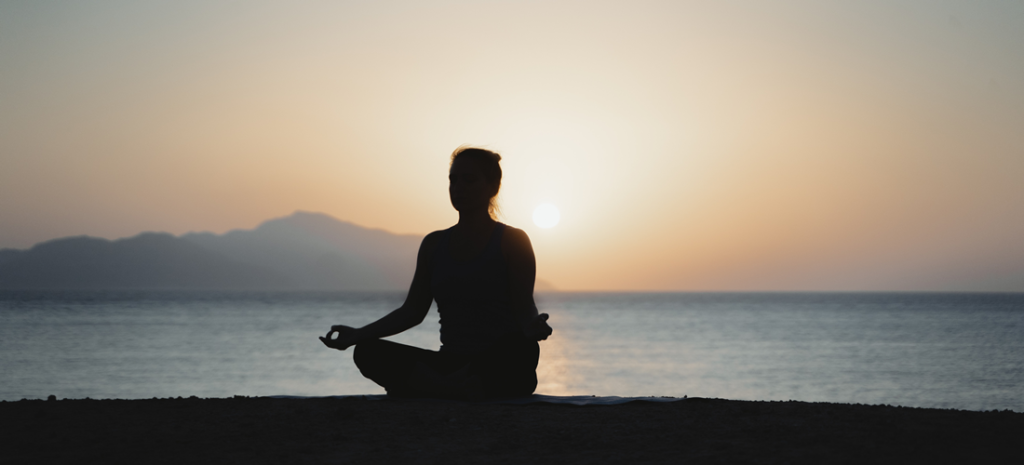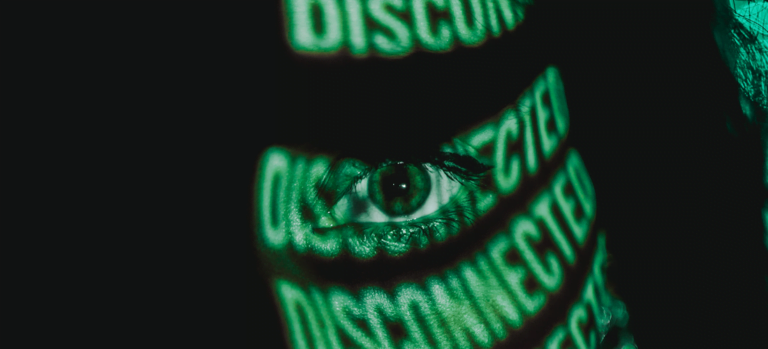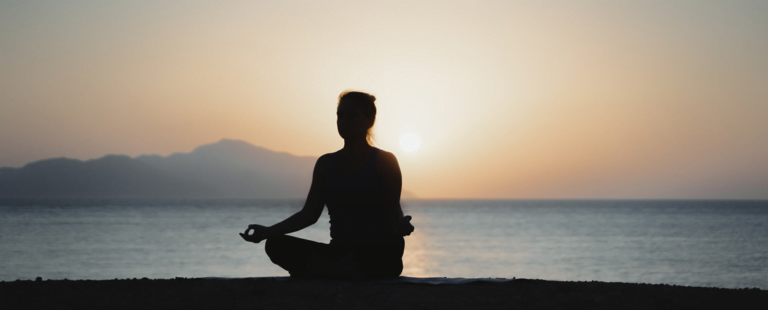The importance of solitude in self-discovery cannot be overstated. Picture solitude as your personal haven – a space free from external distractions and influences. This quiet, uncluttered space becomes a sanctuary where you can engage in introspection, allowing you to delve deeper into your thoughts, emotions, and beliefs. In the silence, you discover the authentic you, unswayed by societal pressures or expectations. This solitude is not about loneliness; rather, it’s about forming a deeper connection with your inner self. It’s here, in this profound silence, that you can truly hear your inner voice, fostering self-awareness and facilitating personal growth.
Today we will look into specific meditation techniques that harness the power of solitude for self-discovery. We will explore various practices ranging from mindfulness meditation to transcendental meditation, each with unique processes and benefits. Our focus will be on how these techniques facilitate a journey inward, helping you peel back the layers of societal expectations and self-doubt to reveal your authentic self.
Solitude and Self-Discovery Meditation Techniques
Mindfulness Meditation
Mindfulness meditation is a practice that involves focusing your mind on the present moment. It encourages a heightened state of awareness and acceptance of your current feelings, thoughts, and sensations. This technique is particularly relevant to self-discovery as it teaches you to observe your thoughts without judgment or reaction. The act of mindful observation helps you recognize patterns in your thoughts and emotions, revealing underlying beliefs and attitudes that shape your actions. By practicing mindfulness, you can achieve clarity about your true self, separate from societal influences and personal biases.
Step-by-step Guide to Mindfulness Meditation
- Find a quiet and comfortable place: Choose a location that is free from distractions where you can sit comfortably for a few minutes. You can sit on a chair, on the floor, or anywhere that makes you feel comfortable.
- Set a time limit: Especially if you’re a beginner, starting with just a few minutes each day can help you develop a regular meditation practice.
- Pay attention to your body: Sit in a relaxed, comfortable position. You can close your eyes if it’s comfortable for you. Make sure your back is straight but not stiff.
- Feel your breath: Pay attention to the sensation of your breath as it goes in and out. Notice the movement of your body as you breathe. Observe your chest, shoulders, rib cage, and belly.
- Notice when your mind wanders: Your attention will leave the sensations of the breath and wander to other places. When you notice this — in a few seconds, a minute, five minutes — simply return your attention to your breath.
- Be kind to your wandering mind: Don’t judge yourself or obsess over the content of the thoughts you find yourself lost in. Just come back to focusing on your breath again and again.
Loving-Kindness Meditation
Loving-kindness meditation, also known as Metta meditation, is a practice designed to cultivate love and compassion towards oneself and others. It stems from Buddhist traditions, but has been widely adopted by various cultures due to its universal appeal and significant psychological benefits. This meditation technique involves focusing your mind on developing feelings of goodwill, kindness, and warmth towards others, starting with yourself and progressively extending that love to people in your life and ultimately to all beings. It’s a technique to heal the mind of any traces of ill-will and resentment, paving the way for emotional resilience and deep-rooted happiness.
Practicing Loving-Kindness Meditation for Self-Discovery
- Finding a Comfortable Position: Begin by finding a quiet, peaceful place where you won’t be disturbed. Settle into a comfortable seated position, either on a chair or on the floor, with your back upright but relaxed.
- Breathing and Relaxation: Close your eyes and take a few deep breaths. Allow the breath to be natural and relaxed, and let go of any tension in your body.
- Setting an Intention: Set an intention for your practice. This could be a simple phrase like, “May I discover more about myself through love and kindness.”
- Self-Compassion: Start by directing love and kindness towards yourself. You can use phrases like, “May I be happy. May I be well. May I be safe. May I be peaceful and at ease.” Repeat these phrases in your mind, letting the feelings they evoke fill your body.
- Expanding Compassion: Gradually expand your focus to include others. Imagine someone you care about, and repeat the phrases for them: “May you be happy. May you be well. May you be safe. May you be peaceful and at ease.” Eventually, extend your loving-kindness to neutral people, difficult people, and finally all beings everywhere without distinction.
- Mindful Return: When your mind wanders, gently bring your focus back to the phrases and the feelings of loving-kindness.
- Closing: To close the meditation, sit quietly for a few moments, feeling the effects of your loving-kindness meditation. Carry this feeling of love and compassion with you throughout your day.
Body Scan Meditation
Body Scan Meditation is a mindfulness technique that involves paying close attention to various parts of your body, from your toes to the crown of your head. The objective is to tune in to your body—to reconnect to its physical presence—and notice any sensations you’re feeling without judgment. This technique cultivates improved concentration, greater body awareness, and a deeper sense of calm and relaxation.
The benefits of Body Scan Meditation are bountiful. Research suggests it can reduce stress, improve well-being, and decrease physical discomfort and pain. It’s a powerful tool for fostering a mind-body connection, driving your focus away from the usual whirlwind of thoughts and towards the present moment. By practicing this technique, you can cultivate a more profound understanding of how your body experiences stress and relaxation, enhancing your ability to manage and respond to life’s challenges more effectively.
Solitude and Self-Discovery Body Scan Meditation
This meditation technique is designed to foster a sense of solitude and self-discovery, propelling you on a journey of introspection and personal enlightenment. Here are the step-by-step instructions:
- Preparation: Find a quiet and comfortable space where you won’t be disturbed. Lie down on your back on a yoga mat or bed. Close your eyes and take a few deep, calming breaths.
- Starting at the Feet: Begin by focusing your attention on your feet. Notice any sensations you feel, such as warmth, coolness, or tingling. If you notice any tension, imagine it melting away with your out-breath.
- Progress Upwards: Gradually shift your focus upwards to your legs, hips, stomach, chest, arms, and finally your head. Take your time to thoroughly explore each body part. Emphasize your breath, inhaling peace and calm, exhaling tension.
- Observation and Acceptance: If you come across any areas of discomfort or tension, don’t rush to change anything. However, do acknowledge the sensation and silently tell yourself, “That’s okay.” The idea is not to fix, but to observe and accept.
- Self-discovery: As you scan your body, pay attention to any emotions or memories that arise. This process may reveal hidden feelings or thoughts and can contribute to self-awareness and discovery.
- Ending the Session: After scanning your whole body, take a moment to feel your body as a whole. Appreciate your journey of exploration and discovery. Slowly open your eyes and stretch gently as you prepare to continue with your day.
Reflective Meditation
Reflection plays a pivotal role in the process of self-discovery. It acts as a mirror, allowing you to introspect and understand your thoughts, emotions, and reactions in different situations. By reflecting, you create a space for self-awareness, opening the door to deeper understanding and personal growth.
Engaging in reflective meditation helps you to recognize patterns in your behavior, identify your strengths and weaknesses, and gain clarity about your values and beliefs. This can lead to more meaningful and fulfilling experiences, as you begin to align your actions with your authentic self. Thus, reflection essentially fuels self-discovery and personal development, fostering a sense of inner peace and contentment.
Techniques for Incorporating Reflection into Meditation Practice
- Journaling After Meditation:
- Practice your usual meditation, and immediately afterward, take a few minutes to jot down your thoughts and observations in a journal.
- Reflect on any emotions, thoughts, or realizations that emerged during the meditation.
- Use the journal as a tool for self-discovery and tracking your progress over time.
- Guided Reflection Meditation:
- Listen to guided meditations that incorporate reflection prompts.
- Guided sessions often include questions or themes to contemplate, encouraging deeper self-reflection.
- Choose guided meditations that align with your current goals or areas of focus for personal growth.
- Mindful Inquiry:
- During your meditation, direct your attention inward and ask yourself open-ended questions.
- Questions could be related to your emotions, thoughts, or experiences. For example, “What am I feeling right now?” or “What thoughts arise when I think about a particular situation?”
- Allow the answers to unfold naturally without judgment.
- Focused Reflection on Intentions:
- Begin your meditation by setting a specific intention for the session.
- Reflect on this intention periodically during the meditation, checking in with yourself to see how well you are aligning with it.
- After the meditation, assess how the practice influenced your connection to the intention.
- Body Scan with Reflection:
- Combine a traditional body scan meditation with moments of reflection.
- As you bring attention to different parts of your body, reflect on any sensations, tensions, or emotions associated with those areas.
- This technique enhances both mindfulness and self-awareness.
- Daily Mindfulness Review:
- Set aside a few minutes at the end of each day for a mindfulness review.
- Reflect on your day, considering your reactions, choices, and overall mindset.
- Identify moments of mindfulness and areas where you can improve.
- Gratitude Meditation with Reflection:
- Practice a gratitude meditation, focusing on things you are thankful for.
- After the meditation, reflect on the positive emotions and shifts in perspective that arose during the practice.
- Consider how cultivating gratitude can contribute to your overall well-being.
- Nature Reflection Meditation:
- Conduct your meditation in a natural setting.
- Reflect on the sounds, smells, and sensations of the environment.
- Consider how the natural world mirrors aspects of your inner self.
The Power of Meditation in Self-Discovery
Meditation is a powerful tool for self-awareness and introspection. By taking the time to sit in solitude and turn our focus inward, we can gain a deeper understanding of ourselves. This internal exploration allows us to identify our thoughts, emotions, and reactions, thereby enhancing our overall self-awareness.
Regular meditation can reveal patterns in our thought processes and emotional responses, providing us with the insights required to make constructive changes. As we use methods like body scan and daily mindfulness review, we cultivate an increased awareness of our physical and mental states, linking our body and mind in a profound connection.
By setting intentions and reflecting on them, we steer our journey of self-discovery in a direction that aligns with our personal growth goals. Thus, the practice of meditation is intrinsically tied to the process of self-awareness and discovery.
Solitude can often be seen as a negative experience; however, when combined with meditation, it becomes an opportunity for self-discovery and personal growth. Engaging in meditation while in solitude allows us to quiet external distractions and focus inward.
This, in turn, enables us to better understand our emotional and mental states, enhancing our ability to regulate our reactions to situations. By regularly practicing solitude and self-discovery meditation techniques, we can cultivate a sense of inner peace and self-acceptance. This can improve our relationship with ourselves and others, leading to a more fulfilling life experience.
Solitude, when embraced with mindfulness, becomes not just a state of being alone but a journey of self-discovery, personal growth, and inner fulfillment.
Integrating Solitude and Meditation into Daily Life
Finding moments of solitude can be challenging but is crucial for mental well-being and self-discovery. Here are some tips for incorporating moments of solitude into a busy schedule:
- Schedule Dedicated Time:
- Treat solitude as a priority by scheduling specific time for it in your calendar.
- Even if it’s just 10-15 minutes, having dedicated moments can make a significant difference.
- Start Your Day Mindfully:
- Begin your day with a few minutes of solitude. Whether it’s enjoying a quiet cup of tea or sitting in contemplative silence, starting the day mindfully sets a positive tone.
- Lunch Break Solitude:
- Use part of your lunch break for solitude. Find a quiet spot, away from your workspace, to decompress and recharge.
- Consider activities like a short walk, reading, or simply sitting quietly.
- Create a Morning Routine:
- Establish a morning routine that includes moments of solitude.
- Whether it’s meditation, stretching, or journaling, having a consistent routine helps make solitude a natural part of your day.
- Digital Detox:
- Allocate specific times in your day for a digital detox.
- Turn off notifications and step away from screens to create a space for solitude without external distractions.
- Nature Walks:
- Incorporate moments of solitude by taking short nature walks.
- Even a brief stroll in a nearby park or green space can provide a refreshing break and an opportunity for reflection.
- Mindful Commuting:
- Use your commuting time for solitude by practicing mindfulness.
- Instead of constantly checking your phone or engaging in conversation, allow yourself moments of quiet contemplation.
- Prioritize Self-Care:
- View solitude as a form of self-care.
- Whether it’s a longer bath, a quiet moment with a book, or simply sitting in silence, prioritize activities that nourish your mental well-being.
- Set Boundaries:
- Learn to say ‘no’ when needed to avoid overcommitting.
- Setting boundaries allows you to create space in your schedule for moments of solitude without feeling overwhelmed.
- Mindful Breathing Breaks:
- Take short breaks throughout the day for mindful breathing.
- Focus on your breath for a few minutes, bringing your attention back to the present moment.
- Reflect During Transition Times:
- Use transition times between tasks or activities for brief moments of reflection.
- Take a few deep breaths and center yourself before moving on to the next task.
- Evening Reflection Ritual:
- Dedicate a few minutes before bedtime for reflection.
- Review your day, express gratitude, and mentally prepare for rest.
Creating a Sustainable Meditation Routine
Creating a sustainable meditation routine is essential for ongoing self-discovery. Consistency is key when it comes to meditation practice, as the benefits often accumulate over time. Here are some tips to help you establish and maintain a sustainable meditation routine for ongoing self-discovery:
- Start Small:
- Begin with a realistic and manageable duration. Starting with just 5-10 minutes a day allows you to build a consistent habit without feeling overwhelmed.
- Gradually increase the duration as your comfort and familiarity with meditation grow.
- Choose a Regular Time:
- Select a specific time each day for your meditation practice. Whether it’s in the morning, during lunch, or before bedtime, having a consistent time helps establish a routine.
- Aligning meditation with an existing habit, like brushing your teeth, can make it easier to remember.
- Create a Dedicated Space:
- Designate a quiet and comfortable space for meditation. This could be a corner of a room, a cushion, or even a specific chair.
- Having a dedicated space signals to your mind that it’s time for focused self-discovery.
- Set Realistic Goals:
- Define clear and achievable goals for your meditation practice. These could include reducing stress, increasing mindfulness, or exploring specific aspects of self-discovery.
- Regularly reassess your goals to ensure they align with your evolving needs.
- Experiment with Different Techniques:
- Explore various meditation techniques to find what resonates with you. Whether it’s mindfulness, loving-kindness, or body scan meditation, trying different approaches keeps your practice fresh and engaging.
- Adapt your meditation style based on your current emotional or mental state.
- Use Guided Meditations:
- Integrate guided meditations into your routine, especially if you’re new to meditation.
- Guided sessions provide structure and often include prompts for self-reflection, making them particularly conducive to self-discovery.
- Be Patient and Non-Judgmental:
- Approach your meditation practice with patience and an open mind.
- Acknowledge that some sessions may be more challenging than others, and that’s entirely normal. Avoid self-judgment and embrace each session as an opportunity for growth.
- Build Consistency with Triggers:
- Associate your meditation practice with specific triggers or cues. For example, meditate right after waking up, before meals, or after a specific daily activity.
- Triggers help create a natural flow and make meditation an integrated part of your routine.
- Celebrate Progress:
- Acknowledge and celebrate your progress along the way. This could be milestones in the number of consecutive days you’ve meditated or recognizing positive changes in your well-being.
- Celebrating small victories reinforces the positive aspects of your meditation routine.
- Adjust as Needed:
- Regularly evaluate and adjust your meditation routine based on changes in your schedule or personal preferences.
- Be flexible in adapting your practice to suit the demands of daily life while maintaining its core consistency.
- Join a Meditation Group:
- Consider joining a meditation group or community. Connecting with others who share similar goals can provide support, accountability, and additional resources for self-discovery.
- Track Your Progress:
- Keep a meditation journal to document your experiences, thoughts, and reflections.
- Tracking your progress can help you identify patterns, areas of growth, and the impact of meditation on your self-discovery journey.
Final Thoughts
The practice of solitude and self-discovery meditation holds immense power in our personal growth journey. Cultivating mindfulness through solitude allows us to tap into our inner selves, fostering self-awareness, clarity, and peace. This journey of introspective exploration through meditation provides a rich platform for personal transformation, enabling us to understand our deepest emotions, motivations, and desires. By incorporating these techniques into our daily routines, we can navigate through life’s challenges with greater resilience and grace, continually evolving in our quest for self-discovery.










